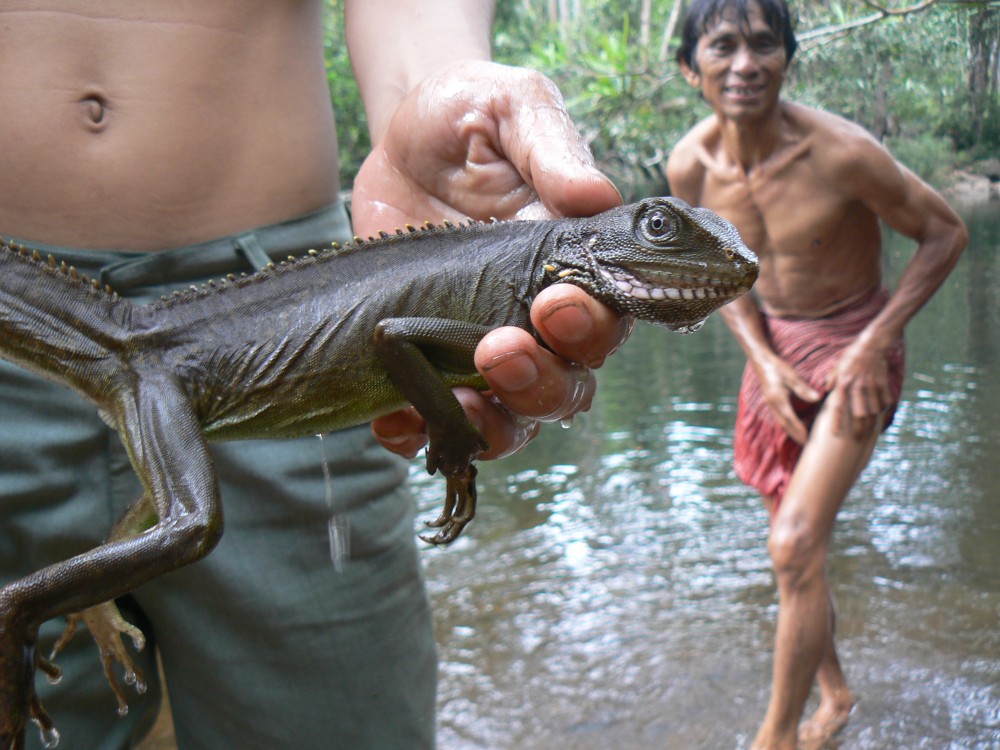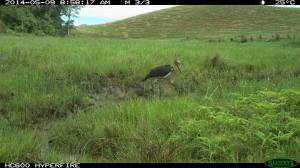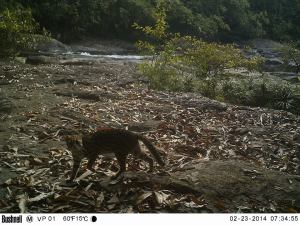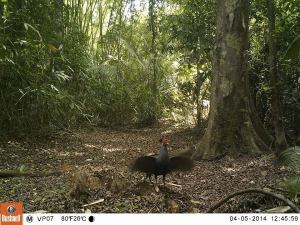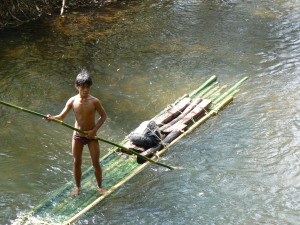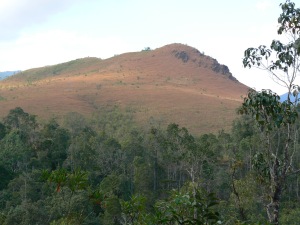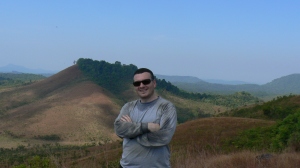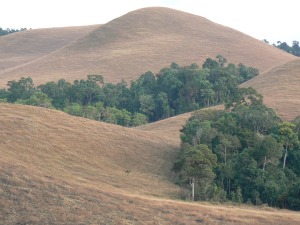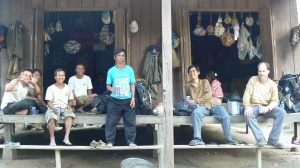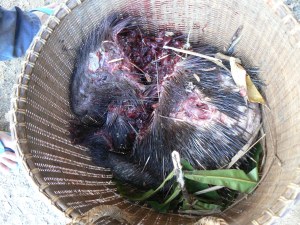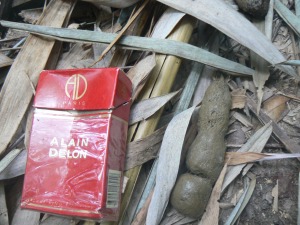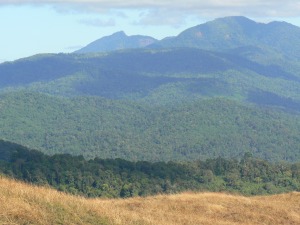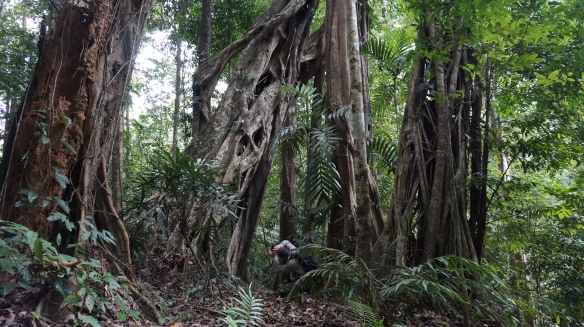
“Real” jungle in Cambodia’a Virachey National Park
On the second-to-last day of 1865 a weak-eyed, not very robust Englishman chanced to be born in Bombay. That utterly unremarkable circumstance a hundred years ago conditions the ideas most people cherish today about jungles, for the Englishman was Rudyard Kipling, one of the world’s favorite storytellers.
Like a lot of others, he wrote “jungle” when he meant any of the tropical forests which cover about one-seventh of the earth’s land surface. Also, like a lot of others before and after him, he knew nothing at first hand about the most magnificent, majestic, mysterious of these forests. He took them as the setting for his stories just because he was not familiar with them and they had for him the romance of the unknown.
Why anyone would apply this word to any kind of forest is explainable only by a not uncommon English disregard for fact and logic that drives language students mad. By Kipling’s time, “jungle” had been used to cover a lot of territory and was hallowed out by those British Army types he so dearly loved and celebrated in his songs and stories.
As anyone who reads the tales must know, the English officer and gentleman is an ardent huntsman. His leisure at home and abroad is devoted to the chase of whatever miserable animal happens to live in the nearest countryside. Neither rain nor wind nor snow, heat nor cold, mountain nor desert can halt his pursuit of wild game. And when the devious politics of empire-building drew British military types known as “political officers” into Persia, almost the first question they asked was: “Where is the best hunting?”
The answer was that gazelles could be found among the sparse, thorny growth of the Persian plains, a near-desert for which the local name was “djanghael.” Adapted to the simplicity of the English tongue, it soon became part of the common speech of these particular gentlemen, who began to talk about going for a spot of hunting in “the jungle.”
Gradually, their private name for a hunting ground spread until it became a mark of anyone who had served the British in this part of the world. The men who used it apparently forgot its origin, or maybe they didn’t care.
The word cropped up next in the hot hills of Sind in Pakistan, to which a lot of these chaps were transferred. The terrain was very much like that to which they had grown accustomed in Persia and was inhabited by lion, cheetah and other quarry considered to be a gentleman’s legitimate prey. The intrepid Englishman hunted there happily enough, although they disliked the dust and heat and cursed the “abominable jungle.”
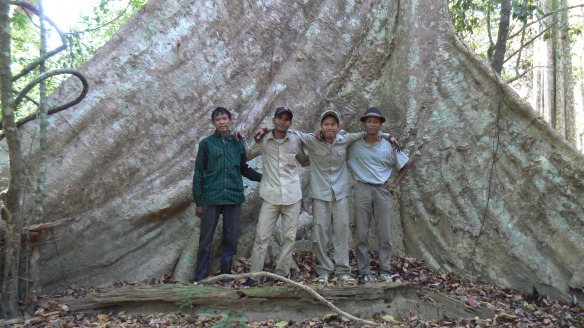
Local Lao and Kavet people in the jungle of Virachey NP, Cambodia
Transferred again, many of them to India, they moved gradually southward through that varied subcontinent until they reached the Western Ghats, the range of hills stretching in both directions from Bombay. Here there is genuine tropical evergreen rain forest of tall, column-like trees with such thick foliage at the top that it is called “closed canopy.” They saw more of it as their missions of Empire took them along to southern India and Ceylon and across to Burma where some of them went to look after the teakwood business.
In all these places, they went hunting. The country could hardly had differed more from Persia to Sind, but when they became ensnarled and snagged in a lush growth of vegetable things, they damned “the jungle.” Furthermore, almost every British Indian Army colonel published a book about his experience in “The East.” Since he wrote a lot about his hobby, he used “jungle” over and over again as he told in great detail and with much gusto how he had pursued this or that luckless animal. Eventually the word caught on in England and spread from there all over the world.
The existence of these tropical forests had been known for hundreds of years, of course, but hardly anyone had actually entered them. (The hunters knew only their fringes.) Men had passed around them and floated through them on rivers. Primitive tribes and civilized peoples had lived on the edges. But none of them knew what it was like inside. The forests were there, but that was all anyone could say, just as in another extreme of climate the icecaps are known and seen from outside, but neither Eskimo nor European adventurers penetrated their caps.

(Above: a Red-shanked Douc Langur comes down to check to see if the Earth is still there in Virachey National Park, Cambodia).
The British hunters in “the jungle” were scarcely learned men, and their name for the forest was never adopted by science as a description of anything. Scientists, in fact, think the word is as meaningless as “dinosaur,” invented by a French savant to describe any and all large fossil reptiles which are, or area thought to be, extinct. Dinosaur is simply a popular title for a host of different things, and “jungle” fell into the same class.
To men like Kipling, however, “jungle” had a romantic sound, and his readers were perfectly happy with the world of his imagination. In it he placed not only all the plants and animals he had ever seen, but others of which he had only heard, whether or not they were typical of jungles, or even could live in there. In “The Jungle Book,” Mowgli’s adoption by wolves begins this lighthearted catalogue of marvels. India has its wolf packs, to be sure, but they would no more enter a jungle than they would invade a crowded city, for wolves are woodland creatures in this part of the world.
Kipling’s jungles were a never-never land which was so vividly described that readers took it for the real thing, and found it so fascinating and memorable that they passed the myths along to people who do not read. Perhaps some of these were the makers of the famous Tarzan films. They took much of Kipling’s lore and added to it a variety of even more absurd possibilities.
-from Ivan Sanderson’s Book of Great Jungles
